Theorems Relating Lines and Planes
Consider the following theorems relating lines and planes. A diagram is supplied for each theorem that represents one possible depiction of the situation.
- If a line is perpendicular to each of two intersecting lines at their point of intersection, then the line is perpendicular to the plane determined by them.

- Through a given point there passes one and only one plane perpendicular to a given line.
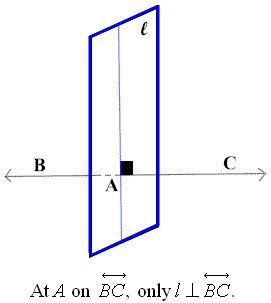
- Through a given point there passes one and only one line perpendicular to a given plane.
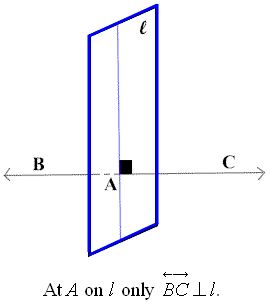
- Two lines perpendicular to the same plane are coplanar.

- Two planes are perpendicular to each other if and only if one plane contains a line perpendicular to the second plane.
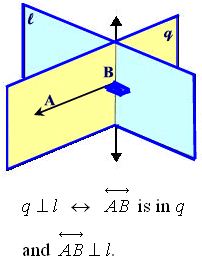
- If a line is perpendicular to a plane, then any line perpendicular to the given line at its point of intersection with the given plane is in the given plane.
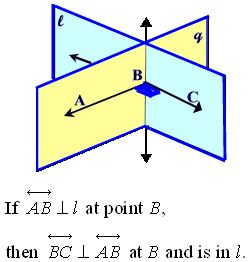
- If a line is perpendicular to a plane, then every plane containing the line is perpendicular to the given plane.

- If a plane intersects two parallel planes, then the intersection is two parallel lines.

- If two planes are perpendicular to the same line, they are parallel.
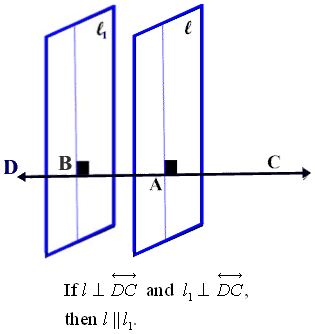
- The angle where two planes meet is called a dihedral angle. Woodworkers and construction workers deal with dihedral angles. For example, creating a rafter for a hip roof requires an understanding of dihedral angles.
